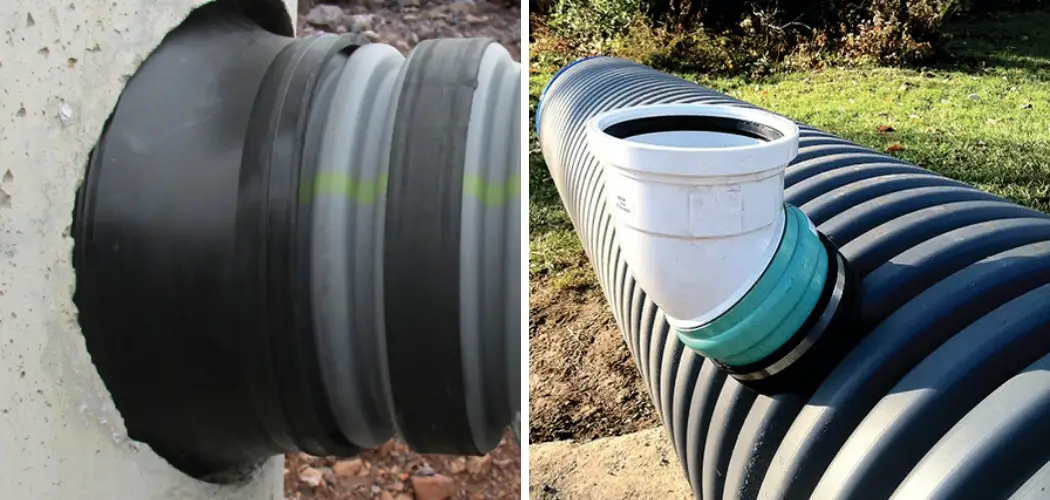Sealing corrugated pipe fittings is a crucial step in ensuring the integrity and longevity of drainage and plumbing systems, commonly used in residential, commercial, and agricultural applications. Corrugated pipes, known for their flexibility and durability, require secure seals at their fittings to prevent leaks, soil infiltration, and potential damage to surrounding structures.
Properly sealed fittings also maintain the hydraulic efficiency of the system, ensuring optimal flow rates and drainage performance. Achieving a reliable seal involves selecting the appropriate sealant or adhesive, preparing the surfaces of the pipe and fittings, and applying the sealant with precision.
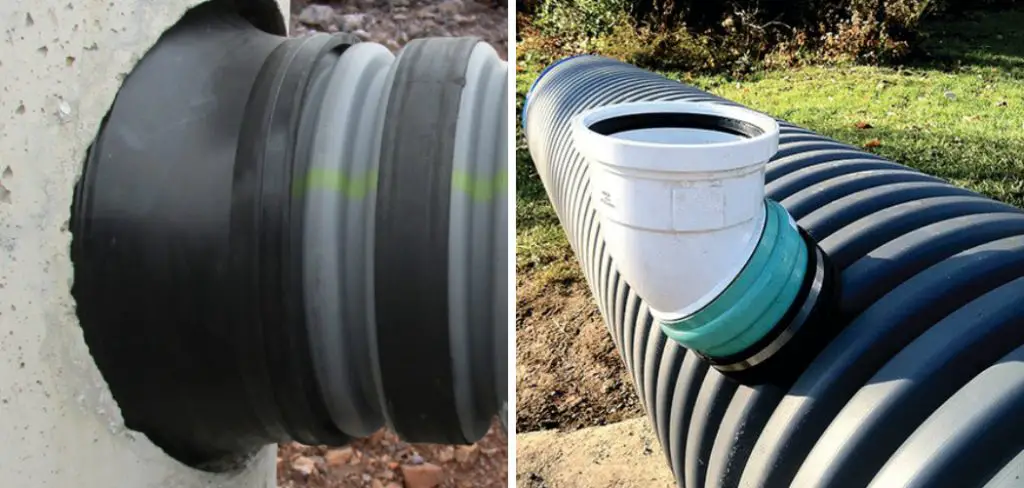
Whether you’re dealing with plastic, metal, or rubber fittings, understanding the correct sealing techniques is essential for a leak-free and long-lasting installation. This guide will provide comprehensive instructions on how to seal corrugated pipe fittings effectively, covering the necessary tools, materials, and techniques to ensure a watertight and secure connection in your drainage or plumbing system.
Importance of Sealing Corrugated Pipe Fittings
The importance of sealing corrugated pipe fittings cannot be overstated. Proper sealing is vital for preventing leaks, which can lead to extensive water damage, soil erosion, and even structural instability in surrounding buildings or agricultural setups. Unsealed or poorly sealed fittings can allow debris and soil to infiltrate the pipe, which can clog the system and hinder its efficiency. This can result in increased maintenance costs and potential system failures. Furthermore, a reliable seal ensures that the hydraulic integrity of the pipe is maintained, facilitating efficient water flow and drainage.
In agricultural settings, well-sealed corrugated pipes are essential for effective irrigation and preventing water loss. In residential and commercial contexts, they safeguard against the risk of water damage, which can be costly to repair. Therefore, taking the time to properly seal corrugated pipe fittings is an investment in the durability and functionality of your drainage or plumbing system.
Understanding Corrugated Pipe Fittings
Understanding corrugated pipe fittings is essential for anyone involved in the installation or maintenance of drainage and plumbing systems. Corrugated pipes feature a distinctive ridged, flexible structure that allows them to adapt to various terrains and conditions, making them ideal for applications ranging from residential drainage to agricultural irrigation. These pipes are typically made from materials like high-density polyethylene (HDPE), metal, or specialized rubber compounds, each offering unique strengths and applications.
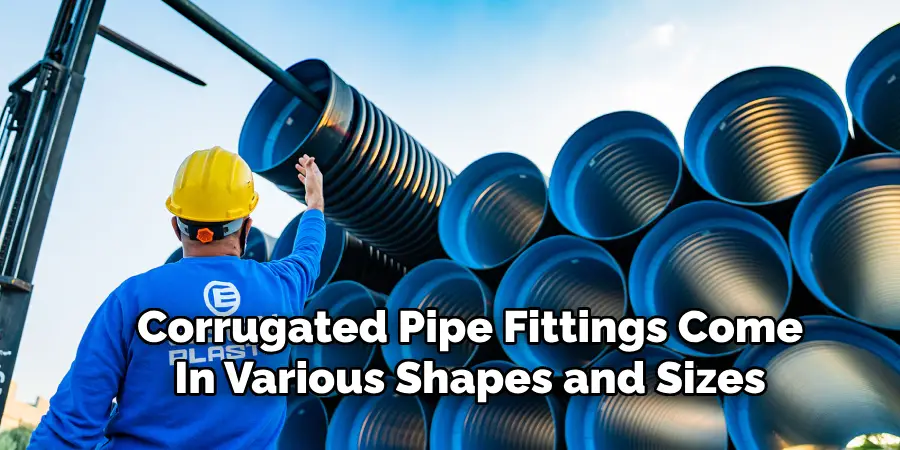
Corrugated pipe fittings come in various shapes and sizes, including couplers, connectors, elbows, tees, and wyes, to accommodate different piping configurations and requirements. These fittings are designed to join sections of piping together securely, ensuring a continuous pathway for water flow. Some fittings may also include additional features such as built-in seals or gaskets, which help to enhance the integrity of the connection and prevent leaks. The choice of fitting often depends on the specific application and environmental conditions, such as soil type, water pressure, and exposure to chemicals or UV radiation.
Correctly identifying and using the appropriate fittings for your corrugated pipe system is crucial for achieving a functional and long-lasting installation. It’s important to follow manufacturer guidelines and industry standards for selecting and installing these fittings to avoid potential issues such as leaks, system blockages, or premature wear and tear. Understanding the various types of corrugated pipe fittings and their applications equips you with the knowledge to make informed decisions and ensures the success of your drainage or plumbing project.
10 Methods How to Seal Corrugated Pipe Fittings
1. Understanding Corrugated Pipe Fittings
Before sealing corrugated pipe fittings, it’s essential to understand their design and function. Corrugated pipe fittings are typically made of plastic or rubber and feature ridges or grooves that interlock with the corrugations of the pipe. These fittings provide a secure connection between sections of corrugated pipe, allowing for changes in direction, elevation, or diameter.
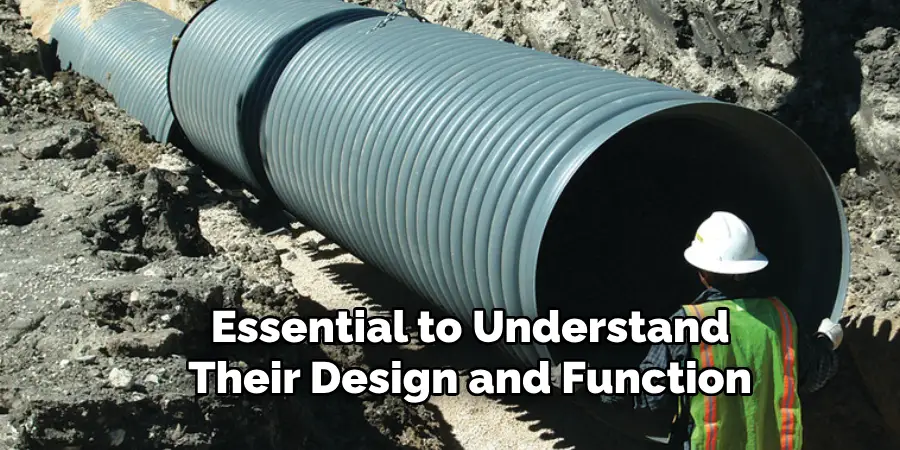
Familiarizing yourself with the types of fittings and their applications helps you choose the appropriate sealing method for your specific needs.
2. Selecting the Right Sealant
Choosing the right sealant is crucial for ensuring a leak-free connection. Consider factors such as the material of the pipe and fittings, the application environment, and the required durability. Common sealants for corrugated pipe fittings include silicone sealant, rubber gaskets, pipe thread sealant, and adhesive-backed foam tape. Select a sealant that is compatible with the materials and conditions of your drainage system to ensure optimal performance.
3. Inspecting the Fittings
Before sealing the fittings, inspect them for any damage, defects, or irregularities. Check for cracks, breaks, or deformities that may compromise the integrity of the connection. Ensure the fittings are clean and free of dirt, debris, or grease that could affect the adhesion of the sealant. A thorough inspection helps identify any issues that need to be addressed before sealing and ensures a secure and reliable connection.
4. Cleaning the Surfaces
Proper surface preparation is essential for achieving a strong and durable seal. Clean the surfaces of the corrugated pipe and fittings thoroughly to remove any dirt, oil, or residue. Use a degreaser or solvent and a clean cloth to wipe down the surfaces. Ensure the surfaces are dry before applying the sealant to prevent contamination and promote adhesion. Cleaning the surfaces ensures maximum bond strength and long-lasting sealing performance.
5. Applying Silicone Sealant
Silicone sealant is a popular choice for sealing corrugated pipe fittings due to its flexibility, durability, and resistance to water and weathering. To apply silicone sealant, cut the tip of the caulk tube at a 45-degree angle and insert it into a caulking gun. Apply a continuous bead of sealant along the mating surfaces of the fittings, ensuring full coverage of the corrugations. Use a putty knife or finger to smooth the sealant and remove any excess. Allow the sealant to cure according to the manufacturer’s instructions before testing the connection.
6. Using Rubber Gaskets
Rubber gaskets provide a tight and reliable seal between corrugated pipe fittings. Ensure the gaskets are the correct size and thickness for the fittings you are using. Place the gasket between the mating surfaces of the fittings, ensuring it is centered and properly aligned. Apply gentle pressure to compress the gasket and create a watertight seal. Rubber gaskets are easy to install and provide excellent sealing performance in various conditions.
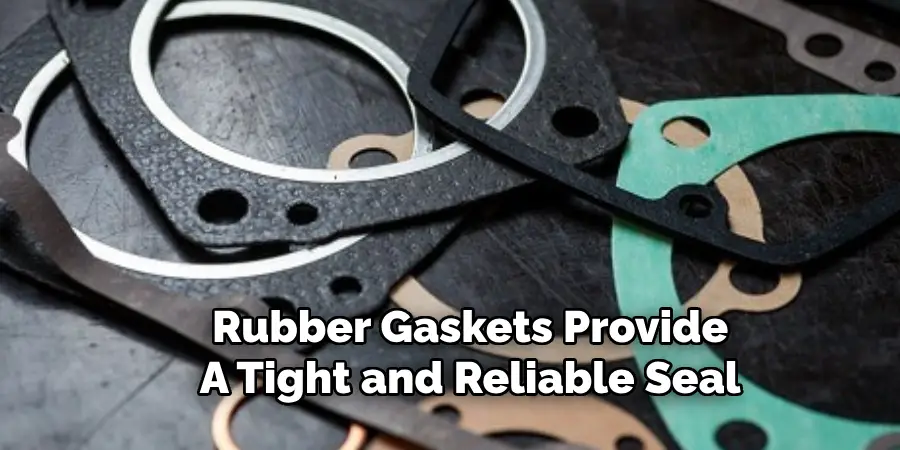
7. Applying Pipe Thread Sealant
Pipe thread sealant, also known as thread tape or Teflon tape, is used to seal threaded connections between corrugated pipe fittings. Wrap the threads of the male fitting with several layers of thread sealant tape, ensuring the tape is wrapped in the direction of the threads. Tighten the fittings together firmly to compress the tape and create a seal. Pipe thread sealant is resistant to water, chemicals, and temperature fluctuations, making it ideal for sealing threaded connections.
8. Using Adhesive-Backed Foam Tape
Adhesive-backed foam tape provides a quick and easy solution for sealing corrugated pipe fittings. Cut the foam tape to the desired length and apply it to the mating surfaces of the fittings. Press the fittings together firmly to compress the foam tape and create a tight seal. Adhesive-backed foam tape is flexible, waterproof, and resistant to weathering, making it suitable for outdoor applications. It provides an effective barrier against water infiltration and helps prevent leaks in corrugated pipe fittings.
9. Applying PVC Cement
For PVC corrugated pipe fittings, PVC cement is commonly used to create a strong and permanent bond. Clean the mating surfaces of the fittings with PVC primer to remove any dirt or debris. Apply a liberal amount of PVC cement to the surfaces, ensuring full coverage. Quickly press the fittings together and hold them in place for a few seconds to allow the cement to set. PVC cement forms a chemical bond between the surfaces, creating a watertight seal that is resistant to pressure and movement.
10. Testing the Sealed Connection
After sealing the corrugated pipe fittings, it’s essential to test the connection to ensure it is watertight and secure. Run water through the drainage system and inspect the sealed fittings for any signs of leaks or seepage. Check for water dripping or pooling around the fittings and ensure that there are no visible signs of water escaping. If any leaks are detected, address them promptly by reapplying sealant or adjusting the fittings as needed. Repeat the testing process until the connection is completely sealed and free of leaks.
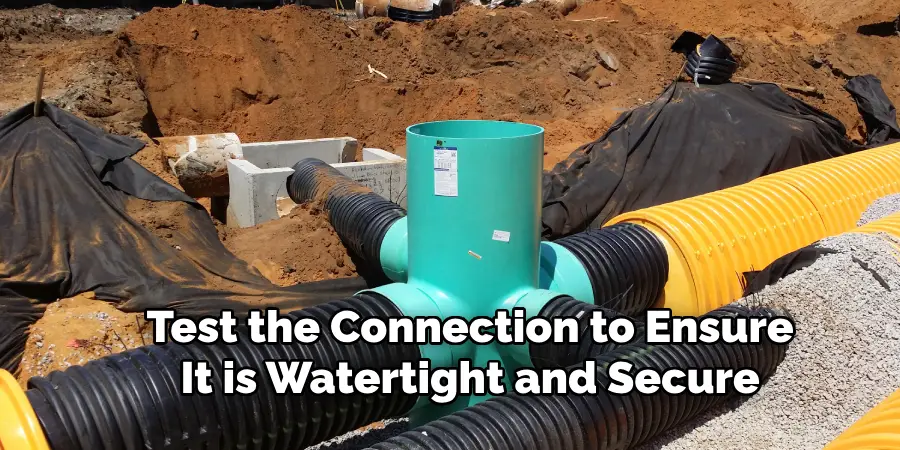
Conclusion
Sealing corrugated pipe fittings is a critical step in maintaining the integrity and functionality of your drainage system. By following these ten comprehensive methods, you can effectively seal fittings and prevent leaks, ensuring optimal performance and durability. Understanding the types of fittings, selecting the appropriate sealant, inspecting and cleaning the surfaces, and applying the sealant correctly are essential steps in achieving a watertight connection.
Whether using silicone sealant, rubber gaskets, pipe thread sealant, adhesive-backed foam tape, or PVC cement, each method offers unique advantages and applications for sealing corrugated pipe fittings. Regular inspection and maintenance of your drainage system help prevent leaks and ensure long-term reliability. Thanks for reading our blog post on how to seal corrugated pipe fittings! We hope you found it helpful and informative.

